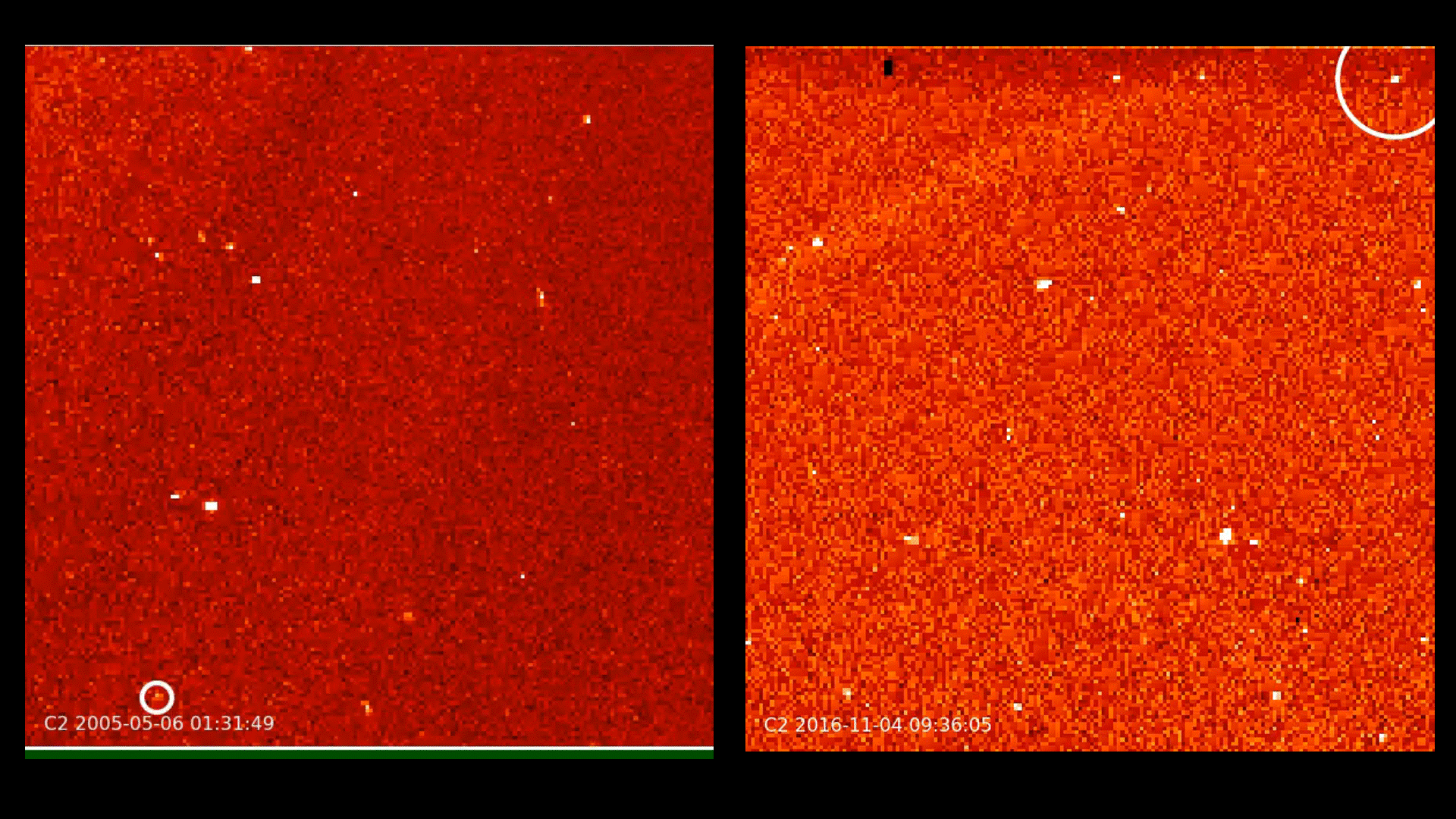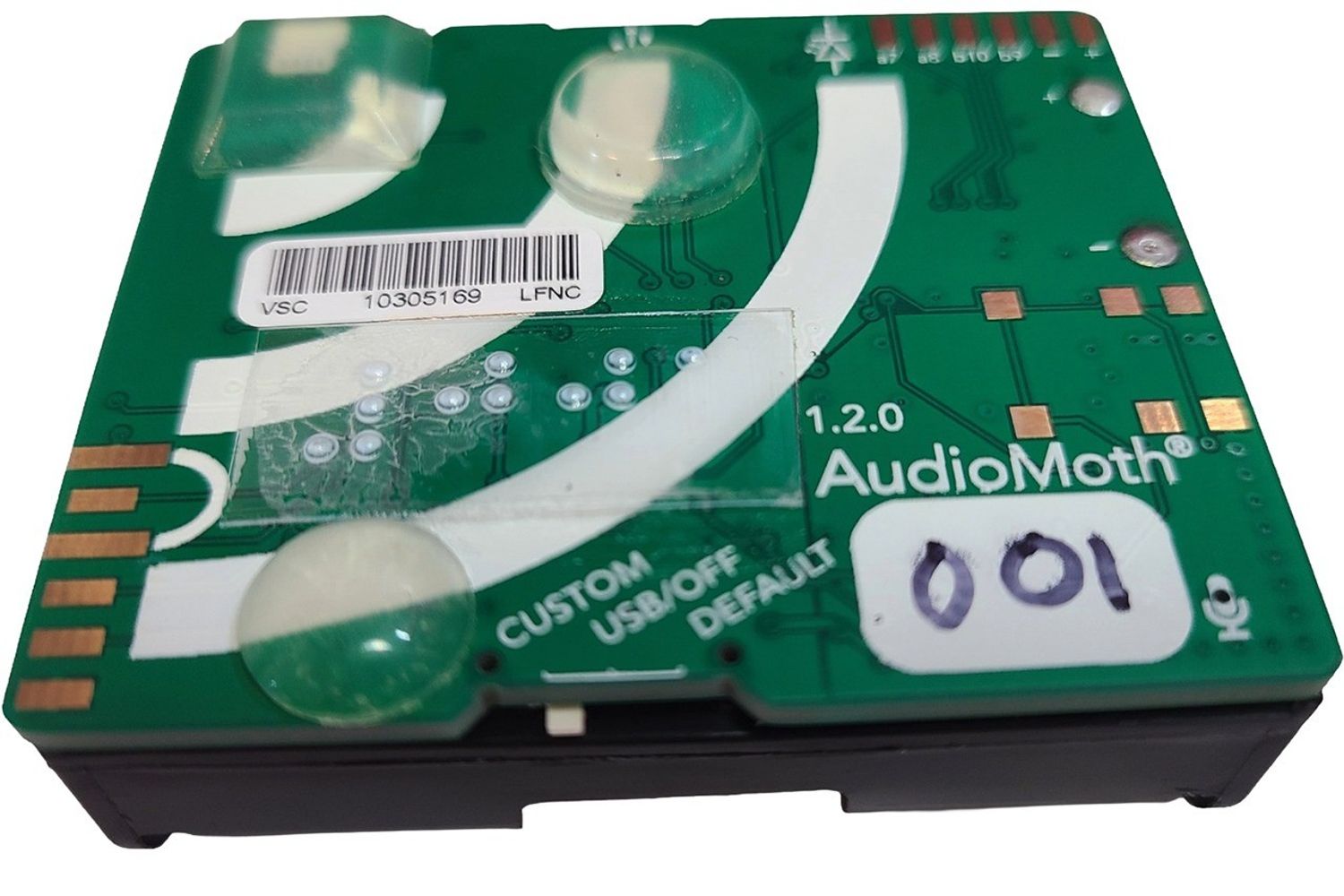Scientists at NASA want to improve existing methods and build new open-science tools to improve their ability to detect very dim comets. Enter the NASA SOHO Comet Search with Artificial Intelligence Challenge – and the resulting discovery of two new comets.
The challenge ran for four weeks and included 596 registrants from 73 countries around the world. Seven winners were selected out of 212 submissions. The primary goal of the challenge was for participants to create artificial intelligence/machine learning (AI/ML) algorithms and methods that could identify and track the faintest noise-level comets with as few false-positives as possible using Solar Heliophysics Observatory (SOHO) mission open-science data. The full results from the challenge will be released soon. “Applying this challenge to the LASCO data set was a fantastic opportunity for a global audience of computer scientists to make a measurable impact to NASA science, with the development of novel AI/ML algorithms that can handle and process SOHO data, and track faint moving objects such as comets,” said Karl Battams, Naval Research Laboratory scientist and principal investigator for the LASCO instrument and the NASA Sungrazer Citizen Science Program. “Not only were the algorithms effective at tracking known comets, they enabled the discovery of two new comets.”
Open Science
To help build a culture of open science, NASA has instituted the Open-Source Science Initiative, which is a comprehensive program of activities – including the NASA SOHO Comet Search with Artificial Intelligence Challenge – that help move science towards openness and inclusivity. The principles of this initiative are designed to help make publicly funded scientific research transparent, inclusive, accessible, and reproducible.
“NASA’s Open-Source Science Initiative is critical for moving all science forward,” said NASA's Deputy Chief Science Data Officer Katie Baynes. “Ensuring that scientific methods and results are accessible, transparent, and understandable helps broaden participation, fosters collaboration, and encourages increased scientific exploration by lowering the barriers to entry. The preliminary results we’re already seeing come out of this challenge highlight the value of the open science movement.”
Using AI/ML to Chase Comets
The SOHO mission is a cooperative international collaboration between the European Space Agency and NASA that was designed to study the Sun inside out, from its internal structure to the extensive outer atmosphere, to the solar wind that it blows across the solar system. SOHO’s Large Angle and Spectrometric Coronagraph, or LASCO, is the instrument that provides most of the imagery. Its two coronagraph telescopes are designed to block direct blinding sunlight and observe the much fainter solar corona (the Sun’s outer atmosphere) and solar outflows. As an unintended consequence of the instrument’s sensitivity, LASCO also detects large numbers of previously unknown “sungrazing comets.”
The purpose of this challenge was for participants to develop AI/ML tools and algorithms that will help astronomers detect these very faint comets that approach the sun.
“Every day we use tools and applications that contain AI/ML technology – they make our lives easier,” said Ekaterina Verner, NASA program scientist and challenge lead. “Using AI/ML is a quick and less expensive way to analyze large data sets and it also gives us the ability to make predictions, find hidden patterns, and increase efficiency in automated processes. Understanding what can already be done using AI/ML algorithms raised the question that sparked this challenge: Can we build upon what AI/ML techniques can currently do and take comet detection beyond what the human eye can see?”
The NASA SOHO Comet Search with Artificial Intelligence Challenge is funded by the Open-Source Science Initiative division at NASA Headquarters in Washington. The challenge was administered and is managed by Topcoder and partnering institutions for this project include the U.S. Naval Research Laboratory, Laboratory for Innovative Science at Harvard, and the Center of Excellence for Collaborative Innovation at NASA’s Johnson Space Center.
Related Links
By Denise Hill
NASA Headquarters, Washington



































